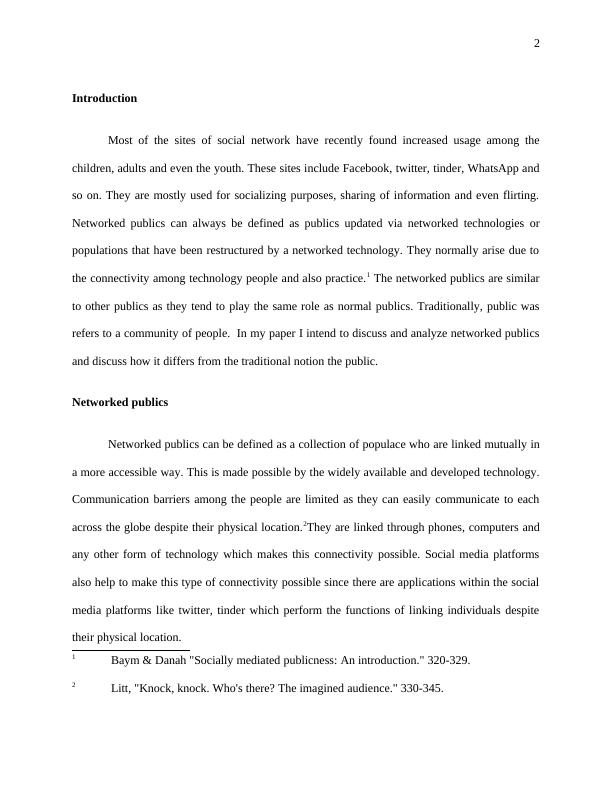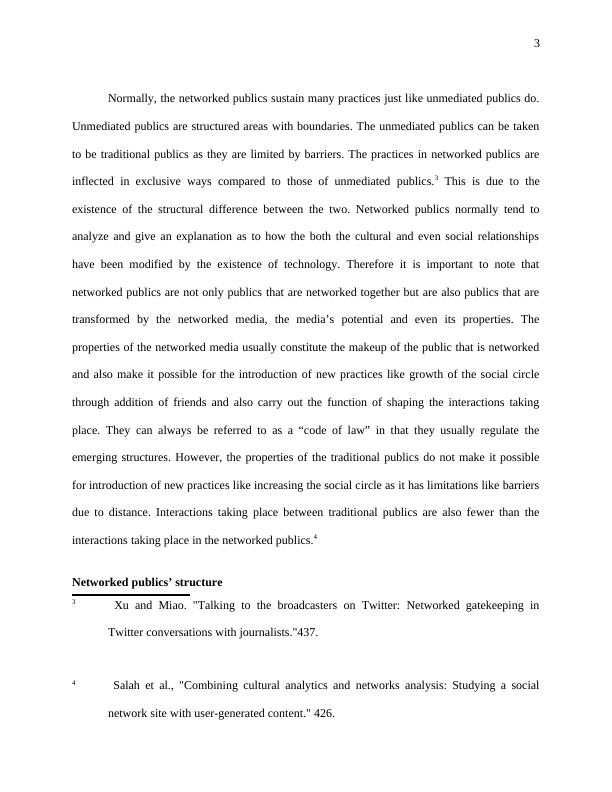Networked Publics: Exploring the Transformation of Social Interaction
Provide a critical analysis of the term 'networked publics' and discuss how it differs from the traditional notion of 'the public'.
11 Pages2805 Words94 Views
Added on 2023-01-18
About This Document
This article discusses the concept of networked publics and how they differ from traditional publics. It explores the impact of technology on social interaction and the benefits of networked publics.
Networked Publics: Exploring the Transformation of Social Interaction
Provide a critical analysis of the term 'networked publics' and discuss how it differs from the traditional notion of 'the public'.
Added on 2023-01-18
ShareRelated Documents
End of preview
Want to access all the pages? Upload your documents or become a member.
Tinder: The Impact of Technology and Communication on Relationships
|9
|2512
|185
Competitive Writing on the Advent of Technology
|4
|812
|105
Summarizing Public Health Informatics Report 2022
|20
|4084
|23
Digital Marketing Strategy Presentation for Regent College London
|15
|1038
|375
Perspectives on Mass Communication Research Methods
|14
|4048
|138
The Impact of Social Networking on Youth: Positive or Harmful?
|8
|1827
|99




